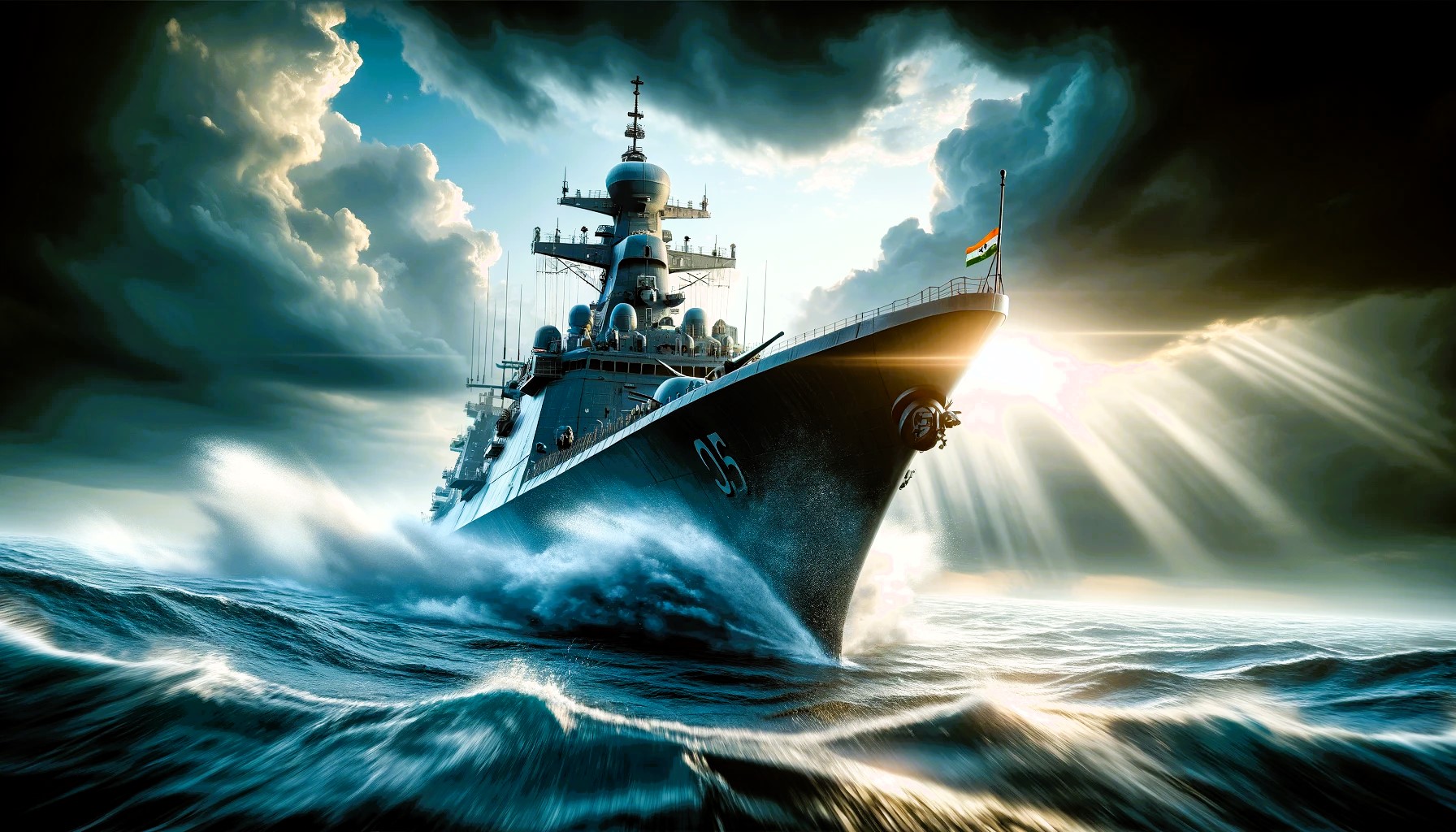As we delve into the might and majesty of the Indian Navy’s floating fortresses, it’s imperative to understand the composition and capabilities of its destroyer fleet.
The Indian Navy destroyers are the sword arm of the maritime force, designed to project power, conduct warfare, and provide unmatched protection over the high seas. Here’s a closer look at the formidable classes of destroyers that constitute the pride of the Indian Navy:
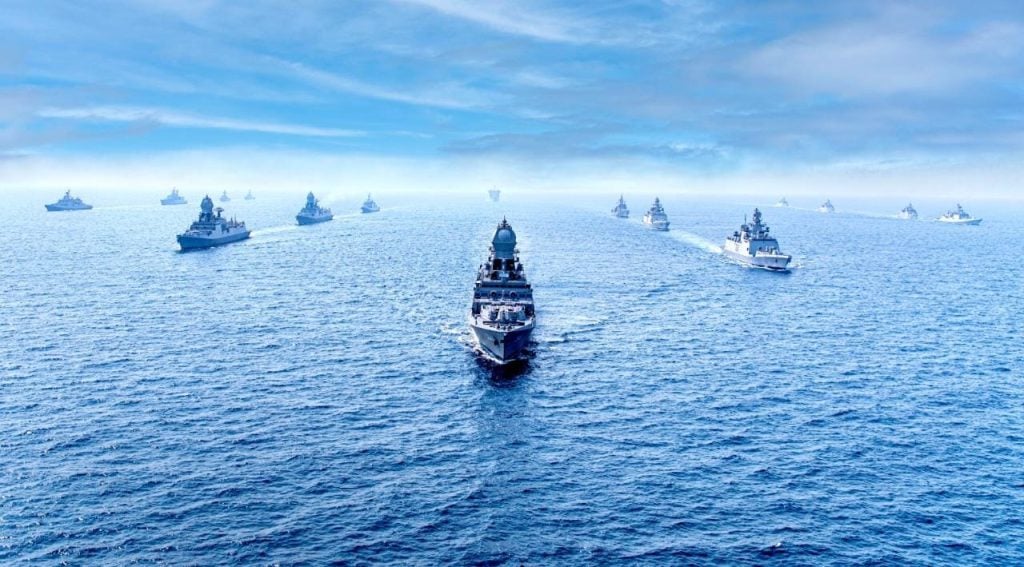
- Visakhapatnam-Class Destroyers:
- The latest addition to the Indian Navy, the Visakhapatnam class, represents the pinnacle of indigenous warship design and construction. These ships are an upgraded variant of the preceding Kolkata class and boast superior stealth features, making them less detectable to enemy radar and sonar.
- Advanced weaponry systems, including long-range surface-to-surface missiles and multi-function surveillance radars, equip these destroyers to handle a wide spectrum of maritime threats.
- The lead ship of this class, INS Visakhapatnam, exemplifies the Navy’s commitment to modernization and self-reliance in defense technology.
- Kolkata-Class Destroyers:
- The Kolkata class includes three state-of-the-art ships, all of which are now operational within the Indian Navy. These destroyer ships are a testament to India’s growing defense capabilities and strategic autonomy.
- They are equipped with a powerful array of weapons, including the BrahMos missile system, which allows them to engage targets at supersonic speeds, ensuring a rapid and decisive advantage during combat operations.
- Delhi-Class Destroyers:
- Comprising three commissioned ships, the Delhi class has been a critical asset to the Indian Navy’s surface fleet. These destroyer ships are particularly known for their integration of the BrahMos supersonic cruise missiles, which enhance their offensive capabilities significantly.
- The Delhi class has served as a stepping stone for the Indian Navy in the evolution of destroyer design, leading to the more advanced Kolkata and Visakhapatnam classes.
The strategic significance of these destroyers in maritime security cannot be overstated. They serve as both deterrents and defenders, safeguarding India’s maritime interests against any threats. As we continue to explore the individual classes, we will uncover the technological advancements and the evolutionary journey that has solidified the position of Indian Navy destroyers as a formidable force on the world’s oceans.
Visakhapatnam-Class Destroyers
As we delve deeper into the capabilities of the Indian Navy’s destroyers, the Visakhapatnam-Class Destroyers, also known as Project-15B, stand out as a testament to India’s maritime prowess. Here are some key aspects of these formidable ships:
- Design and Construction:
- Directorate of Naval Design: The Visakhapatnam-Class Destroyers are a product of meticulous design by the Indian Navy’s own Directorate of Naval Design.
- Mazagon Dock Shipbuilders Limited: These ships are built with precision at Mazagon Dock Shipbuilders Limited, Mumbai, showcasing India’s growing expertise in warship construction.
- Fleet Composition: The class includes four ships: INS Visakhapatnam (D66), INS Mormugao (D67), INS Imphal (D68), and one unnamed ship (D69), each christened after major Indian cities with profound historical and cultural significance.
- Specifications and Armament:
- Dimensions and Speed: With a length of 163 meters, a displacement of 7,400 tonnes, and a top speed of 30 knots, these ships are both agile and powerful.
- Weapon Systems: The destroyers are armed with an impressive arsenal including the Barak 8 missile system, BrahMos supersonic cruise missiles, and AK-630 close-in weapon systems, making them adept at both offensive and defensive operations.
- Sensors and Radars: Advanced sensors and modern surveillance radars like the IAI EL/M-2248 MF-STAR and BEL RAWL-02/LW-08 ensure a comprehensive situational awareness in all maritime conditions.
- Operational Features and Indigenous Content:
- Combat Systems: Each ship is equipped with a state-of-the-art combat management system and secure networks to manage the vast data from sensors and weapon systems efficiently.
- Survivability: Features like multiple fire zones and battle damage control systems enhance the ships’ survivability in emergent conditions.
- Indigenous Components: Notably, the Visakhapatnam-Class Destroyers boast an estimated 72% of their components sourced indigenously, underscoring our commitment to self-reliance in defense technology.
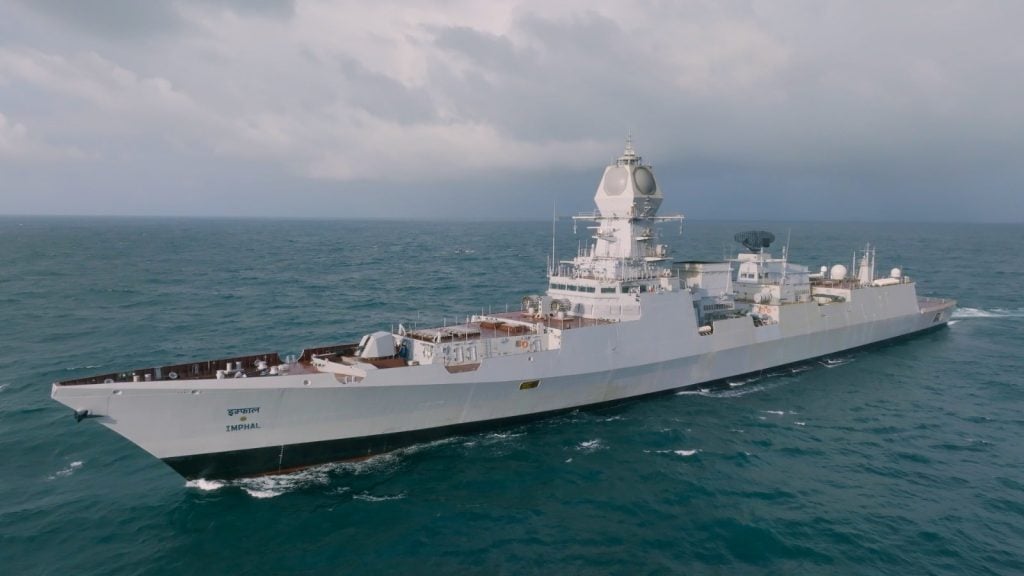
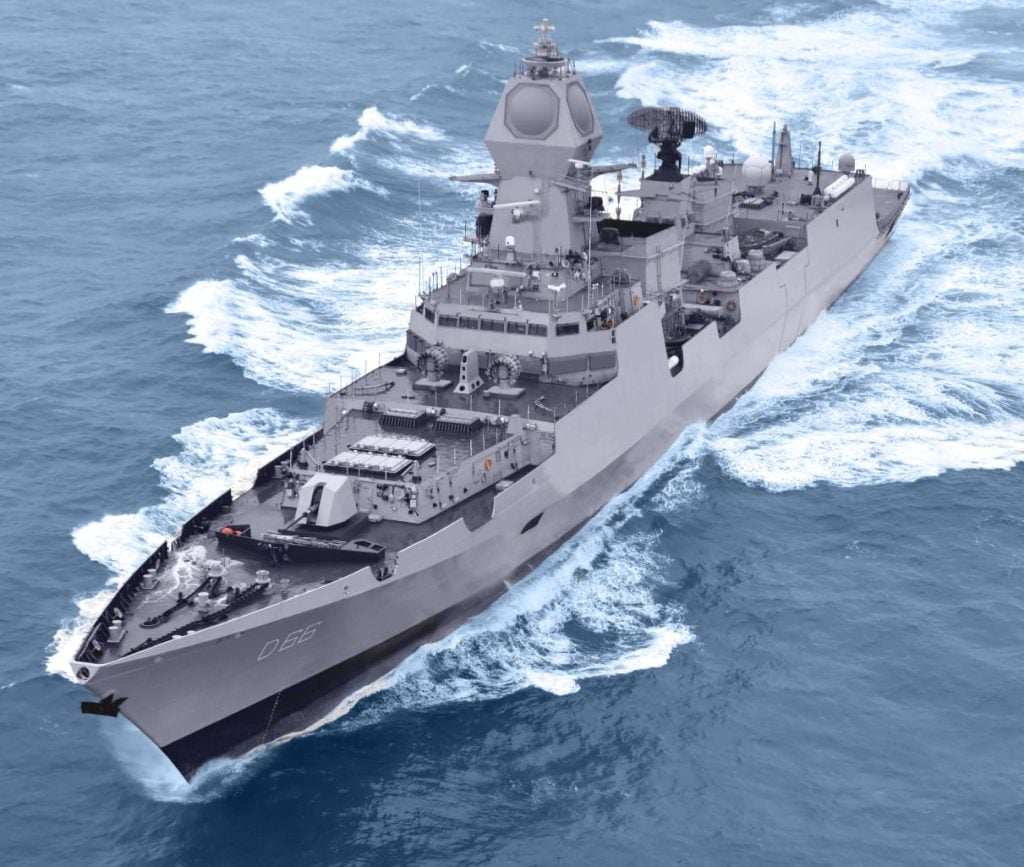
Each Visakhapatnam-Class Destroyer is designed to operate as a formidable independent offense platform and as a key asset in network-centric warfare. These ships are not only equipped to protect the Indian Navy’s fleet and carrier battle groups from various threats but also embody the spirit of our nation’s strategic autonomy and technological advancements in the realm of maritime security.
Kolkata-Class Destroyers
Moving forward in our exploration of the Indian Navy’s destroyer fleet, let’s focus on the strength and sophistication of the Kolkata-class destroyers, also known as Project 15A. These ships represent a significant leap in the capabilities of Indian Navy destroyers and are a cornerstone of our maritime might.
- Fleet Overview:
- Ships of the Class: The Kolkata-class comprises three formidable ships – INS Kolkata, INS Kochi, and INS Chennai – each a marvel of modern naval engineering, built by the stalwarts of Mazagon Dock Limited (MDL) in India.
- Dimensions and Propulsion: With a commanding presence, these ships span 163 meters in length and have a beam of 17.4 meters. Their combined gas and gas propulsion systems empower them to reach speeds of up to 30 knots, with a considerable range of 6,000 nautical miles at a cruising speed of 18 knots.
- Armament: Their arsenal is a testament to their battle readiness, featuring a 76 mm main gun, four AK-630 close-in weapon systems for defense against aerial threats, two RBU-6000 anti-submarine rocket launchers, and four 533 mm torpedo tubes for sub-surface combat scenarios.
- Missile Systems and Electronic Warfare:
- Air Defense and Anti-Ship Missiles: The Kolkata-class destroyers are equipped with a formidable missile suite, including 32 Barak-8 air defense missiles and 16 Brahmos missiles, the latter capable of striking targets with precision, whether at sea or on land.
- Advanced Radar and Countermeasures: To maintain tactical superiority, these ships are outfitted with state-of-the-art electronic countermeasures and radar systems, such as the EL/M-2248 MF-STAR S-band AESA multi-function radar and Thales air search radar, ensuring comprehensive threat detection and engagement.
- Network-Centric Warfare and Cost Considerations:
- Technological Edge: Designed for network-centric warfare, these destroyers can operate in a Cooperative Engagement Capability environment, seamlessly sharing information and resources with other assets to dominate the battle space.
- Economic Factors: Despite facing cost overruns, the investment in each Kolkata-class destroyer, at approximately US $950 Million, underscores our commitment to maintaining a formidable and technologically advanced fleet. These ships paved the way for the even more advanced Visakhapatnam class destroyers, which have built upon the technological foundations laid by the Kolkata class, enhancing stealth features and automation for future readiness.
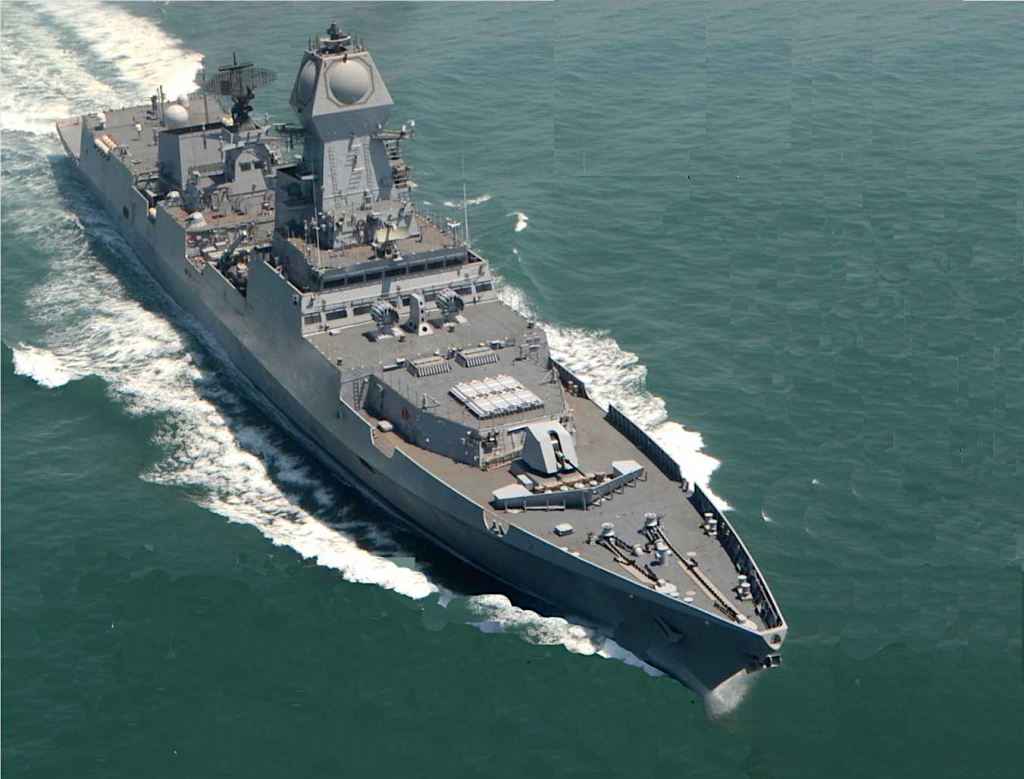
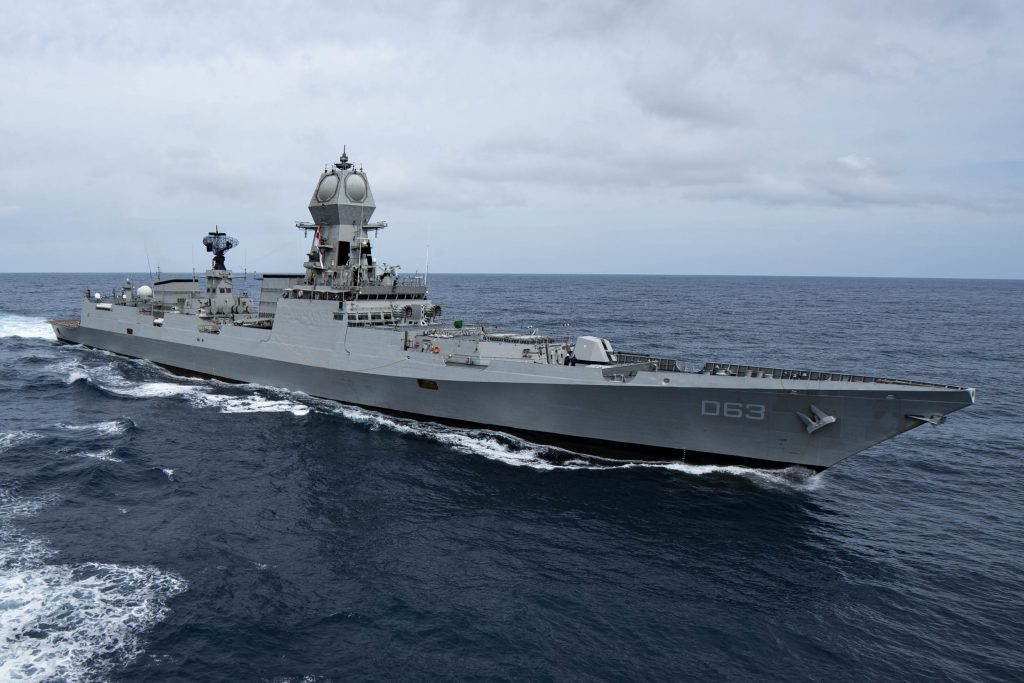
The Kolkata-class destroyers are not just ships in the Indian Navy; they are the carriers of our aspirations, the defenders of our seas, and the harbingers of a new era in naval warfare. As we continue to bolster our naval capabilities, the Kolkata-class stands as a proud reminder of our journey towards self-reliance and maritime supremacy.
Delhi-Class Destroyers
In the lineage of Indian Navy destroyers, the Delhi Class Destroyers hold a venerable position as the predecessors to the more contemporary Kolkata and Visakhapatnam classes. These ships have been the bulwark of our maritime strength and have significantly contributed to the blue-water capabilities of the Indian Navy. Here, we delve into the specifics of these stalwart vessels:
- Introduction to the Fleet:
- Commissioning Dates: The lead ship, INS Delhi (D61), was commissioned in 1997, followed by INS Mysore (D60) in 1999, and INS Mumbai (D62) in 2001, marking a significant milestone in the Indian Navy’s surface warfare capabilities.
- Builder: All three ships were built by the esteemed Mazagon Dock Limited, Mumbai, a testament to India’s shipbuilding prowess.
- Design and Capabilities:
- Displacement and Dimensions: Each destroyer in this class has a displacement of approximately 6,700 tonnes and measures 163 meters in length, providing a robust platform for a wide array of weaponry and sensors.
- Propulsion System: Powered by a combined gas and gas propulsion system, these destroyers can achieve speeds of up to 32 knots, allowing rapid response to any strategic demands across the high seas.
- Armaments and Technological Aspects:
- Weaponry: The Delhi Class Destroyers are armed with an array of weapons including surface-to-surface missiles, surface-to-air missiles, and anti-submarine torpedoes, ensuring a comprehensive offensive capability.
- Electronic Warfare Suite: These ships are also equipped with advanced electronic warfare systems, enhancing their ability to engage in complex maritime operations with efficacy and resilience.
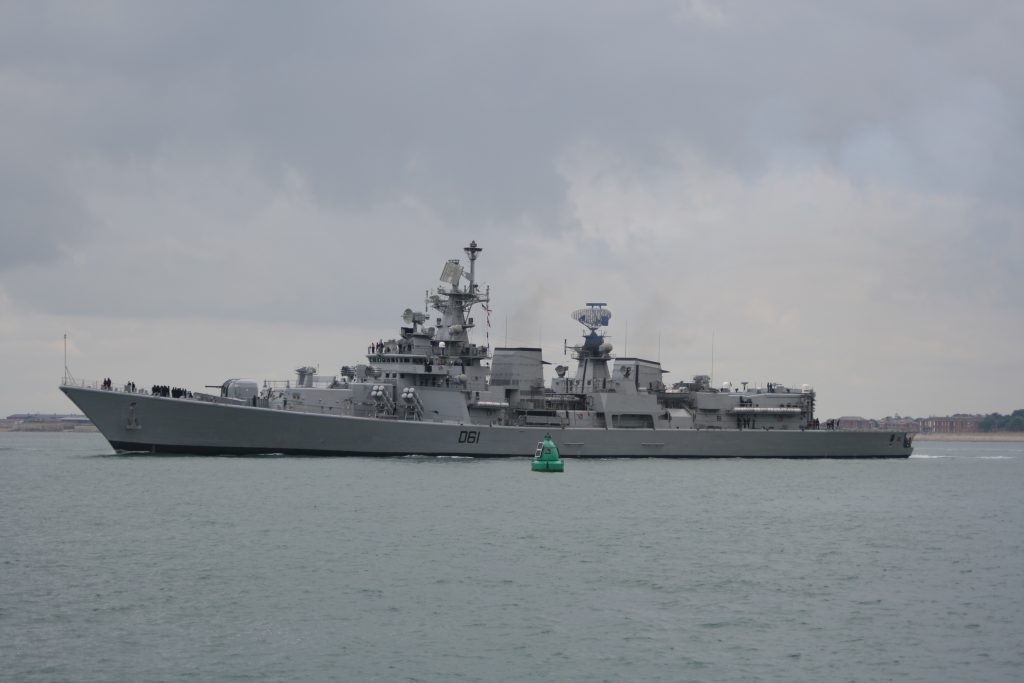
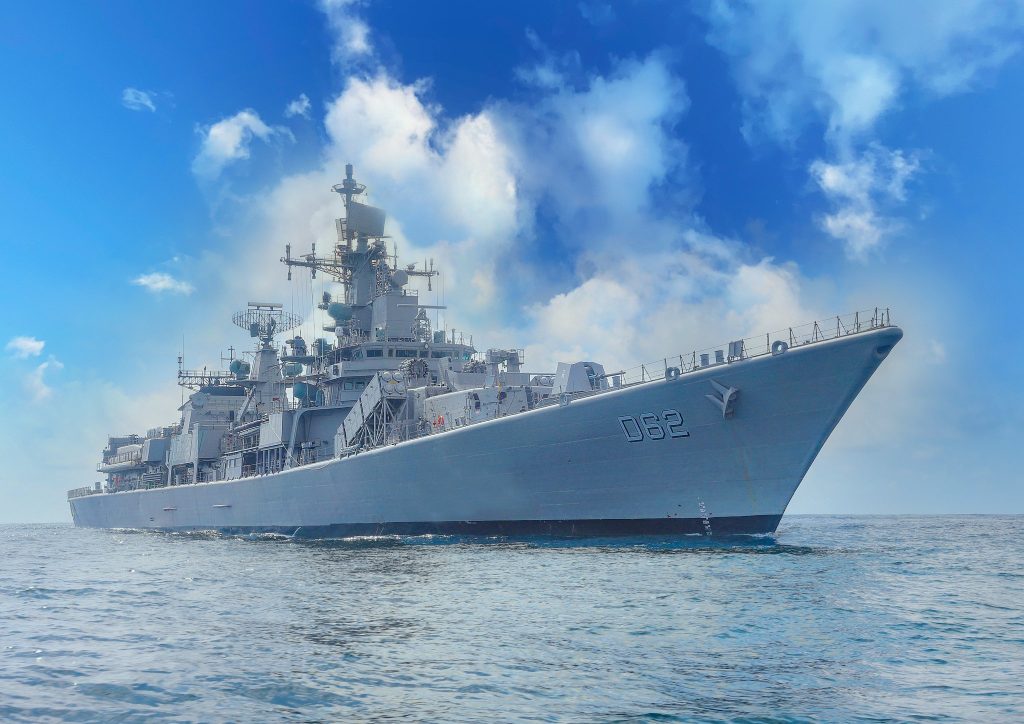
The Delhi Class Destroyers, as the forerunners of the destroyer ship lineage in the Indian Navy, have paved the way for the technologically advanced classes that followed. While they may not possess the stealth features of the Visakhapatnam class destroyer or the network-centric capabilities of the INS Kolkata class destroyers, their service to the nation remains undiminished. They continue to be a critical component of the destroyers of the Indian Navy, representing our unwavering commitment to safeguarding our maritime frontiers.
Rajput-Class Destroyers
As we continue our exploration of Indian Navy destroyers, we turn our attention to the venerable Rajput-Class Destroyers. These ships have been the backbone of the Indian Navy’s surface fleet for decades and have a rich history of service and valor.
Vital Statistics and Capabilities:
- Dimensions and Propulsion: The Rajput-class destroyers are impressive in their size and speed, measuring 146.5 meters in length with a beam of 15.8 meters and a draught of 4.8 meters. Powered by four Zorya-Mashproekt M3E gas turbines in a COGAG arrangement, they boast speeds of up to 35 knots.
- Range and Endurance: With a range that extends to 4,500 nautical miles at a cruising speed of 18 knots and 2,600 nautical miles at a swift 30 knots, these destroyers are built for long-duration missions, ensuring the Indian Navy’s presence wherever needed.
- Crew Capacity: Each ship is operated by a dedicated crew of around 300 officers and sailors, a testament to the teamwork and professionalism that runs deep in the ethos of the ships of the Indian Navy.
Armament and Tactical Role:
- Diverse Weapon Systems: The Rajput-class destroyers are equipped with a variety of weapons systems, including surface-to-air missiles and surface-to-surface missiles, as well as anti-submarine weapons, making them versatile in engaging threats in all dimensions of naval warfare.
- BrahMos Supersonic Missiles: They were the first in the Indian Navy to deploy the BrahMos supersonic cruise missile systems during a mid-life refit, significantly enhancing their strike capability and transforming them into a formidable force on the high seas.
- Barak 8 Integration: In keeping with the Indian Navy’s commitment to continual upgradation, the Rajput-class destroyers have been enhanced with the Barak 8 surface-to-air missile system, bolstering their air defense capabilities and ensuring they remain relevant in modern maritime conflicts.
Service and Legacy:
- Decades of Service: The lead ship, INS Rajput, was commissioned in May 1980 and proudly served for 41 years before being decommissioned in May 2021. The class includes other stalwarts like INS Rana, INS Ranvir, INS Ranvijay, and INS Mysore, each with its own storied history within the Indian Navy.
- Strategic Operations: These destroyers have played pivotal roles in various operations and exercises, including the annual Milan multilateral naval exercise, showcasing India’s commitment to regional stability and maritime cooperation.
- Transition to Modernity: As the Indian Navy marches towards a future of advanced maritime technology, the Rajput-class destroyers are expected to be gradually replaced by the new Visakhapatnam-class destroyers. This transition marks a new chapter in the story of Indian Navy destroyers, building on the proud legacy of the Rajput class.
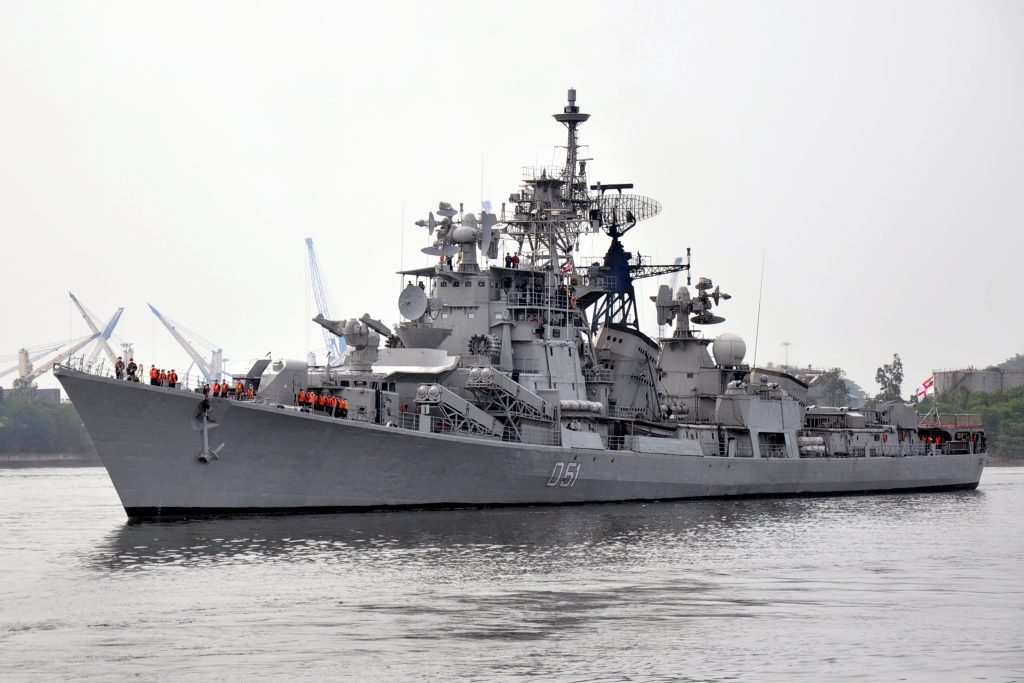
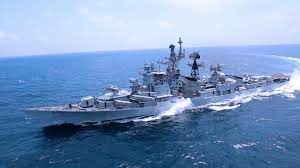
The Rajput-class destroyers, with their formidable history and capability, have been an integral part of the Indian Navy’s journey towards self-reliance and maritime excellence. As we usher in the next generation of destroyers, we honor the service of these ships and the men and women who have served aboard them, carrying forward their spirit of dedication and bravery into the future.
The Evolution of Indian Navy Destroyers
As we chart the waters of maritime prowess, the Indian Navy stands as a formidable force, bolstering its fleet with the objective to command a fleet of 175 warships. Within this impressive armada, the Indian Navy destroyers hold a place of pride, showcasing not only the nation’s defensive might but also our advancing technological capabilities. These steel sentinels, slicing through oceanic expanse, represent our enduring commitment to securing maritime boundaries and strengthening global peacekeeping. In this article, I’ll bring into focus the elite destroyers that form the backbone of our naval fleet, from the mighty Visakhapatnam-Class to the venerable Rajput-Class.
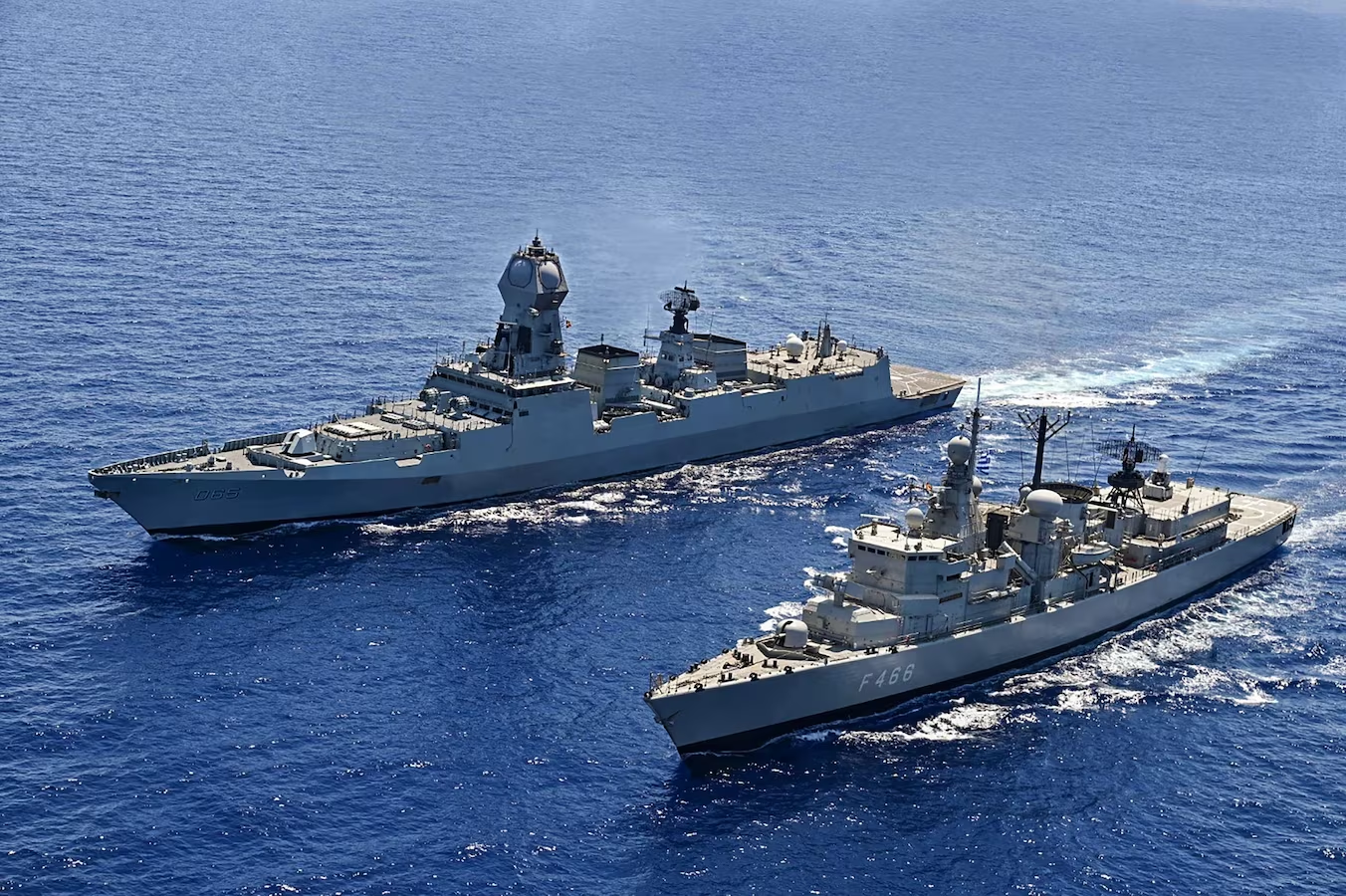
Our journey through the waves delves into the evolution, technological marvels, and strategic indispensability of these naval goliaths. With each section, we’ll uncover the innovations of the INS Kolkata Class destroyers, the tactical might of the Visakhapatnam Class destroyer, and the historical tenacity of the Delhi Class destroyer. In understanding the destroyers of the Indian Navy—past, present, and future—we reaffirm our aspiration to be an educational beacon for defense aspirants and a voice that resounds with authority and ambition. Join me as we explore the destroyers in Indian Navy, celebrating our advancements and acknowledging the silent vigil they maintain over the blue frontier.
Technological Advancements in Modern Destroyers
In the realm of maritime warfare, the technological advancements in modern destroyers have been nothing short of revolutionary. As we continue to assess the capabilities of Indian Navy destroyers, let’s delve into the cutting-edge technologies that are setting the stage for the future of naval engagements:
- Advanced Combat Systems:
- The integration of systems like the Aegis Combat System is a game-changer for destroyers, including those akin to the Arleigh Burke-class, providing a seamless network of radar, computers, and weapons for comprehensive defense against air, surface, and underwater threats. The recent update to the Aegis Baseline 9 system has notably amplified ballistic missile defense capabilities, safeguarding against evolving threats.
- Ballistic Missile Defense Systems, such as the Long Range Discrimination Radar (LRDR), are pivotal in detecting and tracking enemy missiles from afar, ensuring a robust defense posture against long-range threats.
- Stealth and Power Innovations:
- The Zumwalt-class destroyers are a testament to stealth and power, featuring tumblehome hull designs for reduced radar cross-section and wave-piercing capabilities to minimize detection. Their integrated power systems not only propel the ship but also power other ship services, showcasing a leap in naval engineering.
- These ships are also armed with the Advanced Gun System (AGS), capable of launching projectiles over 60 nautical miles, demonstrating the extended reach of modern firepower.
- Sustainability and Autonomous Technologies:
- As we forge ahead, the incorporation of autonomous technologies is set to redefine naval operations. Unmanned Surface Vessels (USVs) and Artificial Intelligence are being explored for mine detection, clearance, and decision-making support, ensuring safer and more efficient missions.
- The focus on cybersecurity is paramount, with modern naval destroyers employing encrypted networks and robust cyber protection strategies to safeguard operational integrity and sensitive information.
- Environmental sustainability is also a key consideration, with innovations like ballast-free ship design to prevent ecological issues and the adoption of LNG as a ship fuel, significantly reducing harmful emissions.
Our Indian Navy destroyers, from the Visakhapatnam class destroyer to the Delhi class destroyer, are poised to integrate such transformative technologies. With the emergence of high-energy laser weapons, space-based surveillance systems, and the potential of space-based 5G communications by companies like SpaceX, the future of the destroyers of the Indian Navy is set to be driven by smart, intelligent 4IR technologies. These advancements not only enhance the capabilities of our ships Indian Navy but also redefine the doctrine of warfare at sea, ensuring that our destroyer ship India maintains a competitive edge in the international waters.
Strategic Significance of Destroyers in Maritime Security
In the intricate tapestry of maritime security, Indian Navy destroyers like the INS Kolkata and INS Kochi are not mere warships; they are the guardians of our seas. Their deployment off the coast of Aden in the Arabian Sea is a prime example of their pivotal role in anti-piracy and maritime security operations. These ships Indian Navy are the bulwark against piracy, ensuring safe passage for commercial vessels in these precarious waters.
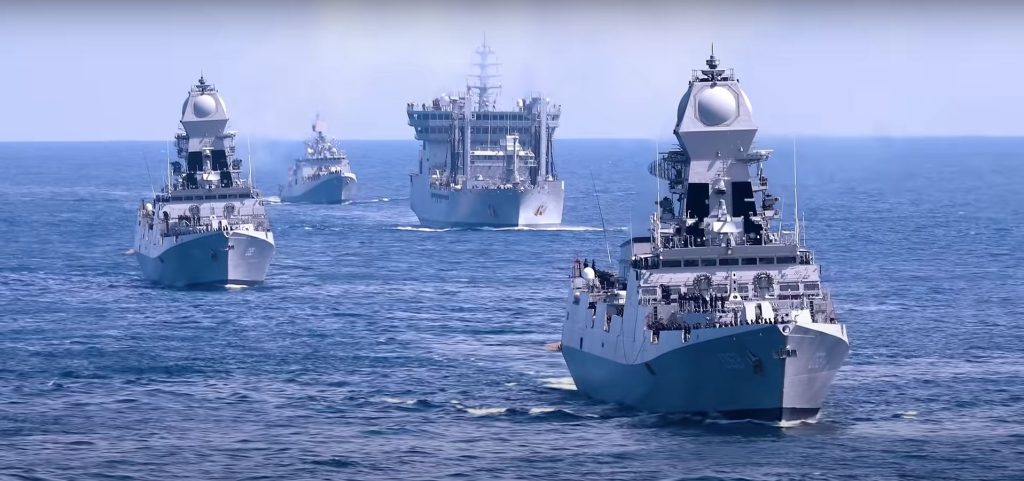
- Anti-Piracy and Maritime Security:
- The strategic placement of our destroyers, such as the INS Kolkata class destroyers, in the Arabian Sea is a direct response to the emerging threats in the region, particularly from the Iranian-backed Houthi militia. These militants, based near the Bab el-Mandab Red Sea choke-point, have access to a formidable arsenal, including ballistic missiles and missile-firing drones, which they have used to target commercial vessels.
- Our destroyers serve as a deterrent, reinforcing the Indian Navy’s commitment to protecting the sea lanes that are vital for international trade and energy flow. The stationing of guided-missile destroyers like the Visakhapatnam class destroyer in the Arabian Sea region exemplifies this commitment.
- Versatile Military Vessels:
- As versatile military vessels, destroyers are primarily used as anti-submarine platforms and air defense ships. They play a crucial role in escorting capital ships and serve as a deterrent to potential threats, a testament to their adaptability and tactical importance in naval operations.
- Enhanced Maritime Surveillance:
- The Indian Navy has taken proactive measures to enhance maritime surveillance in the Central and North Arabian Sea. This is in response to the increasing attacks on commercial ships in the Red Sea, Gulf of Aden, and Arabian Sea. Task groups consisting of destroyers and frigates, such as the Delhi class destroyer, have been deployed for maritime security operations, showcasing the agility and readiness of our fleet.
- In line with the need for complete maritime domain awareness, the Navy has deployed four destroyers of Project 15B & 15A class to counter piracy and drone attacks on merchant shipping. This is complemented by increased aerial surveillance from long-range maritime patrol aircraft and Remotely Piloted Aircraft (RPA), ensuring a vigilant eye over the vast expanse of the Arabian Sea.
We, as a nation, take immense pride in our Indian Navy destroyers, which stand as sentinels of our sovereignty and security. The strategic significance of these destroyer ships India resonates beyond their physical might; it lies in their unwavering vigilance and the peace they ensure for our maritime interests.
Conclusion
Reflecting on the formidable fleet of Indian Navy destroyers, from the technologically sophisticated Visakhapatnam-Class to the time-honored Rajput-Class, we underscore the phenomenal leap India has made in maritime capabilities. These vessels, integral to our nation’s defense, exemplify a legacy of commitment to self-reliance and technological innovation. They stand not just as instruments of naval strategy but as symbols of India’s stature in the global maritime arena, demonstrating a might that is both respected and reckoned with.
As these destroyers continue to navigate the future, they carry with them the aspirations of a nation intent on securing its maritime frontiers and strengthening its presence in international waters. The evolution of India’s destroyers mirrors the journey of a rising maritime power, poised to make significant contributions to global stability and security. The steadfast vigil of these ships ensures the protection of our trade routes and affirms our readiness to face emerging maritime challenges.
FAQs
As we navigate the intricacies of the Indian Navy’s capabilities, a frequently asked question arises about the role and significance of the destroyers in the Indian Navy. To address this and other queries, let’s delve into some key points:
1. What is a Destroyer in the context of the Indian Navy?
A destroyer is a fast, maneuverable, long-endurance warship that is designed to escort larger vessels in a fleet, convoy, or battle group and defend them against powerful short range attackers. In the context of the Indian Navy, destroyers are equipped with a wide array of weapons systems, including missiles, guns, and torpedoes, and are designed to perform a variety of roles such as anti-aircraft, anti-submarine, and anti-surface warfare.
2. How many destroyers does the Indian Navy currently have in service?
The Indian Navy operates several classes of destroyers, including the Visakhapatnam-Class, Kolkata-class, the Delhi-class, and the older Rajput-class. The exact number of active destroyers can vary due to new ships being commissioned and older ships being decommissioned. For the most current information, please refer to official Indian Navy sources or recent defense publications.
3. What are the main features of the Kolkata-class destroyers?
The Kolkata-class destroyers are among the most advanced warships in the Indian Navy. Key features include state-of-the-art radar systems, a vertical launch system for missiles, advanced anti-air, anti-surface, and anti-submarine warfare capabilities, and a sophisticated combat management system. They are also equipped with stealth features to reduce their radar cross-section.
4. Can Indian Navy destroyers carry aircraft?
Yes, Indian Navy destroyers, especially those of the newer classes like the Kolkata-class, are equipped with helicopter decks and hangars to operate one or two multi-role helicopters. These helicopters enhance the ship’s anti-submarine, anti-surface, and search and rescue capabilities.
5. How does the Indian Navy utilize its destroyers?
The Indian Navy utilizes its destroyers for a variety of tasks, including protecting aircraft carriers and other warships, conducting maritime patrols, ensuring sea control, participating in anti-piracy operations, and engaging in diplomatic missions such as joint exercises with friendly foreign navies. They are key assets in both defensive and offensive operations at sea.
6. What kind of missiles are Indian Navy destroyers equipped with?
Indian Navy destroyers are equipped with a range of missiles, including surface-to-air missiles (SAMs) for air defense, anti-ship missiles for engaging surface targets, and land-attack cruise missiles capable of striking targets deep inland. They also carry torpedoes and anti-submarine rockets for anti-submarine warfare.
7. Are Indian Navy destroyers capable of nuclear deterrence?
While Indian Navy destroyers are primarily designed for conventional warfare roles, India does possess naval platforms capable of strategic roles, including submarines equipped with nuclear-capable ballistic missiles. The primary role of destroyers, however, is to provide multi-dimensional warfare capabilities in conventional scenarios.
8. How does the Indian Navy maintain and upgrade its destroyers?
The Indian Navy follows a rigorous maintenance and modernization schedule for its destroyers, involving regular refits and upgrades to their weapons systems, sensors, propulsion, and other critical components. This ensures that the ships remain effective against evolving threats and can operate efficiently throughout their service life.
9. What future plans does the Indian Navy have for its destroyer fleet?
The Indian Navy has plans to further expand and modernize its destroyer fleet by commissioning new ships equipped with the latest technologies. This includes the upcoming Visakhapatnam-class destroyers, which are expected to join the fleet, enhancing the Navy’s capabilities with improved stealth, firepower, and sensor packages.
10. How can one learn more about Indian Navy destroyers?
To learn more about Indian Navy destroyers, interested individuals can visit the official Indian Navy website, read defense journals and publications, attend maritime defense exhibitions, or follow official announcements and updates from the Ministry of Defence, India.

